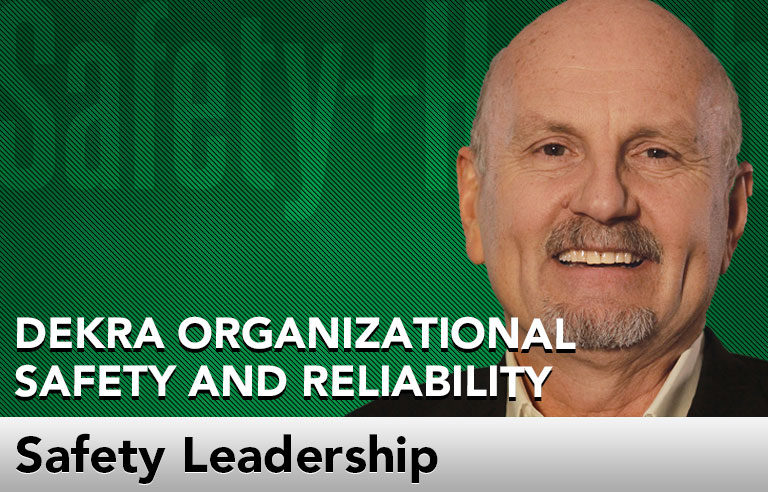Safety Leadership: Can you develop safety leaders remotely?

Editor’s Note: Achieving and sustaining an injury-free workplace demands strong leadership. In this monthly column, experts from global consulting firm DEKRA Organizational Safety and Reliability share their point of view on what leaders need to know to guide their organizations to safety excellence.
Can the virtual learning environment truly be effective in developing safety leaders? Virtual training is common for most industries. (For the purpose of this article, we define “training” as the transfer of information and “development” as the acquiring of new skills and sustained skills application.)
However, the open question about virtual delivery is whether you can use this approach for development. We’re not talking about short-term behavioral change, but development that generates a change in a person’s belief system resulting in long-term behavioral change. This means that when the person reverts back to the old way of doing things, something feels fundamentally wrong and he or she returns to the new behavior.
In doing this work for nearly a year now, we can unequivocally say the answer to this question is “Yes.” The following are tips we’ve learned to develop safety leaders in a virtual environment.
Get managers comfortable with the technology. Before training, conduct a session on how to use the technology and outline the full development plan. Verify everyone can successfully log into the training platform. This may seem obvious, but a barrier to learning is when people struggle to use the technology or feel uncomfortable using all the tools available in the virtual delivery.
Prepare the senior-most leader. The most senior leader needs to have a significant role in the virtual delivery and must be active throughout.
Before training the target audience, train the leaders of leaders on effective coaching. Development is a multistep engagement. A crucial element of training in a virtual environment is taking the new knowledge and skills to the workplace and applying it. To ensure the person can apply the new skills, he or she needs to be observed and coached.
Install a data collection system. Make sure the data collection system is ready to go and will be put to immediate use by the leaders.
Limit group size to 12 people or fewer. It’s so easy to think that because it’s a virtual classroom, you should pack people in. Huge classes might be OK for training, but they don’t work for development.
Limit the use of breakout sessions. Breakout sessions can be useful, but overusing them is typically problematic. When you keep the group to 12 people or fewer, the facilitator – with support from the senior leaders – should be able to manage a larger group “break out.”
Introduce new concepts in small doses and practice new skills in large doses. Spend the bulk of the virtual training on engaging activities that build, practice and reinforce skills.
End the session with a call to action. This needs to be predetermined and introduced by the senior-most leader in the session. It must include a specific action for all participants with an expectation that they will track their actions in the data collection system.
Require the immediate application of the new skills after the session.
- Use field coaching. The classroom environment is only one element in the learning process. For skill development however, ongoing coaching is pivotal to give the leader the confidence that employees can do what is being asked of them. Also, when managers coach their direct reports, it demonstrates their commitment to change.
- Use the data. It will reinforce the behavioral change and address the exposures identified in the field.
Virtual learning is changing how we train and develop employees. However, one isn’t like the other. Training is the sharing of information from one person to the next, which is fairly easy to do virtually. Development requires more because it’s inevitably about sustaining change in the culture. For this reason, development requires a tremendous amount of preparation and involves a series of learning activities that can be revisited over time.
Development is possible in the virtual environment. Not only are leaders growing and changing, but organizations are seeing a change in culture and a significant reduction in injuries.
This article represents the views of the authors and should not be construed as a National Safety Council endorsement.
 Don Groover is the general manager of DEKRA North America (dekra.us). He works with senior executives and leadership teams throughout the world to help them develop an understanding of the current state of exposure control and to develop strategic safety-driven culture change.
Don Groover is the general manager of DEKRA North America (dekra.us). He works with senior executives and leadership teams throughout the world to help them develop an understanding of the current state of exposure control and to develop strategic safety-driven culture change.
Direct to your inbox: Sign up to be notified in email about new "Safety Leadership" columns.
Post a comment to this article
Safety+Health welcomes comments that promote respectful dialogue. Please stay on topic. Comments that contain personal attacks, profanity or abusive language – or those aggressively promoting products or services – will be removed. We reserve the right to determine which comments violate our comment policy. (Anonymous comments are welcome; merely skip the “name” field in the comment box. An email address is required but will not be included with your comment.)

